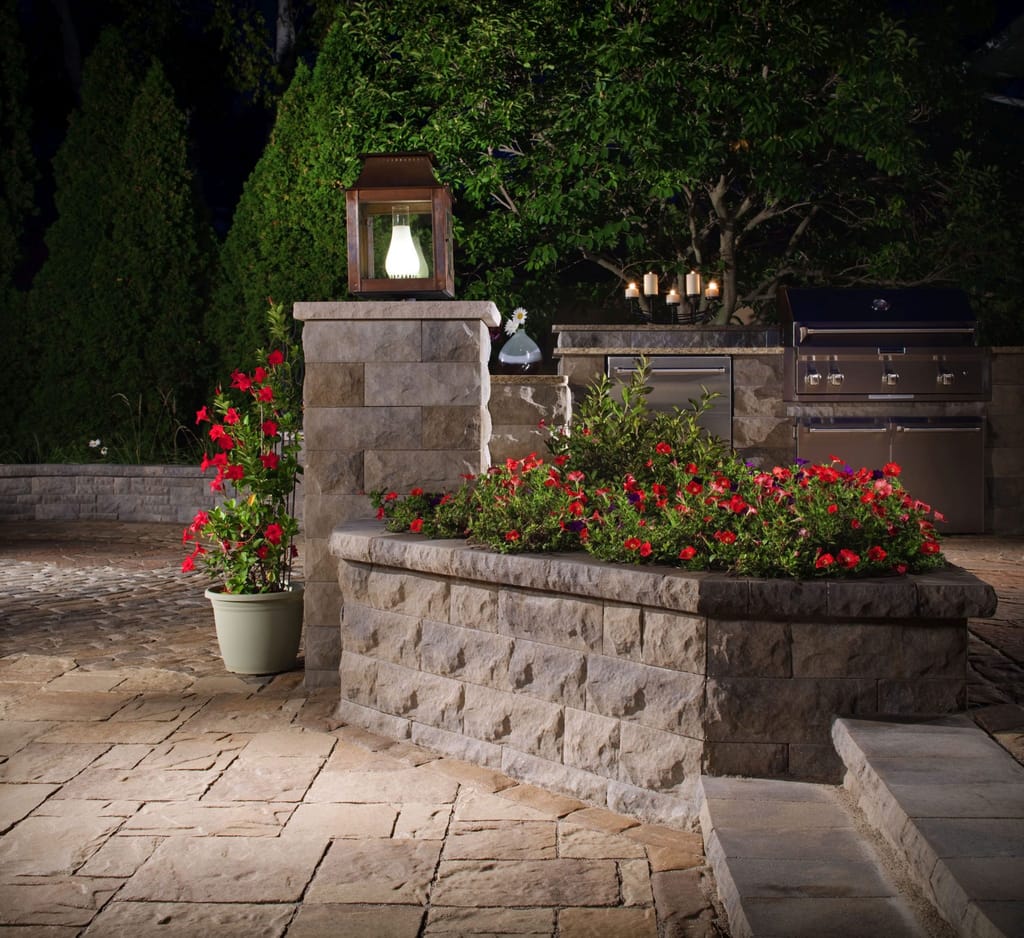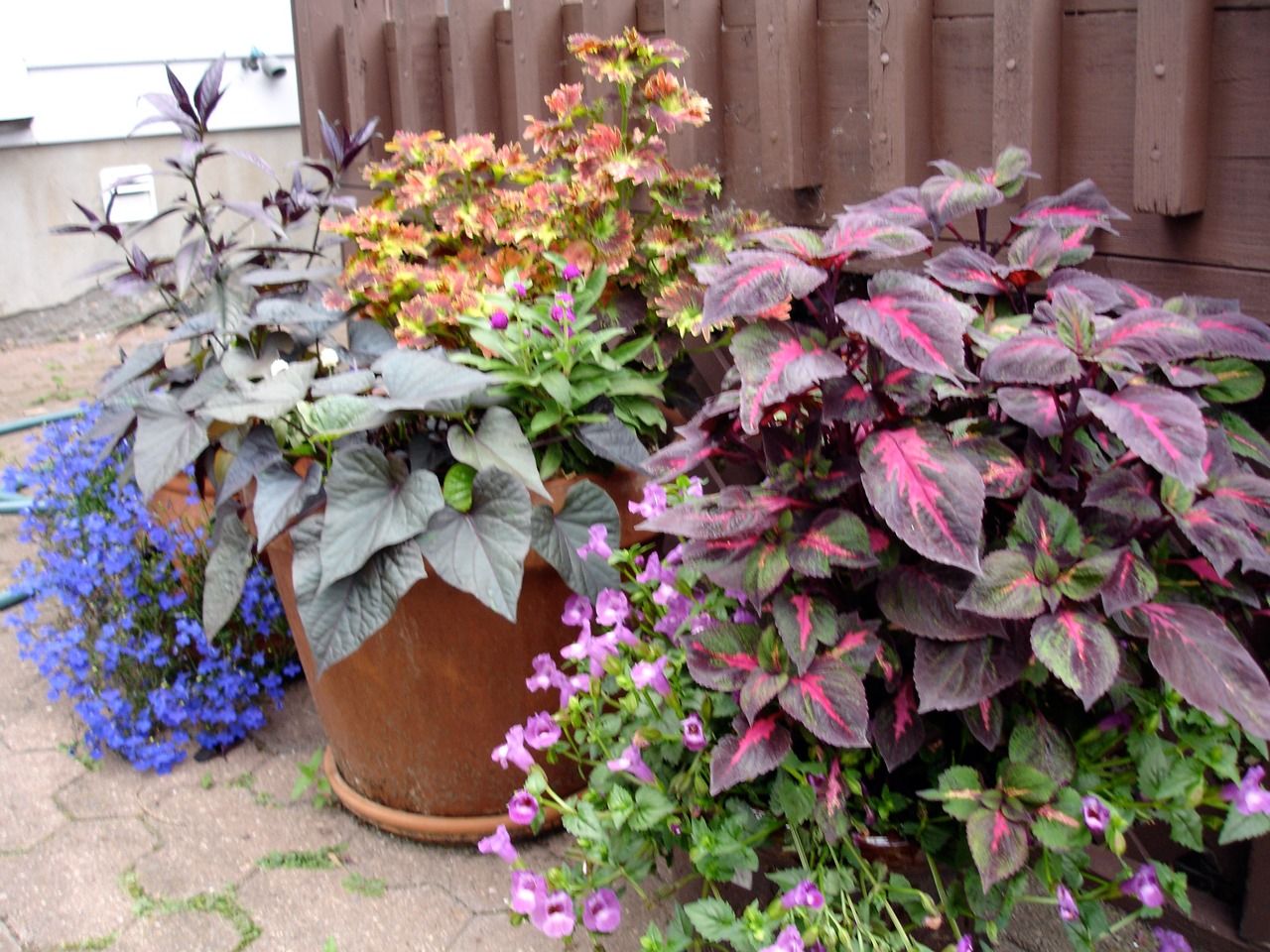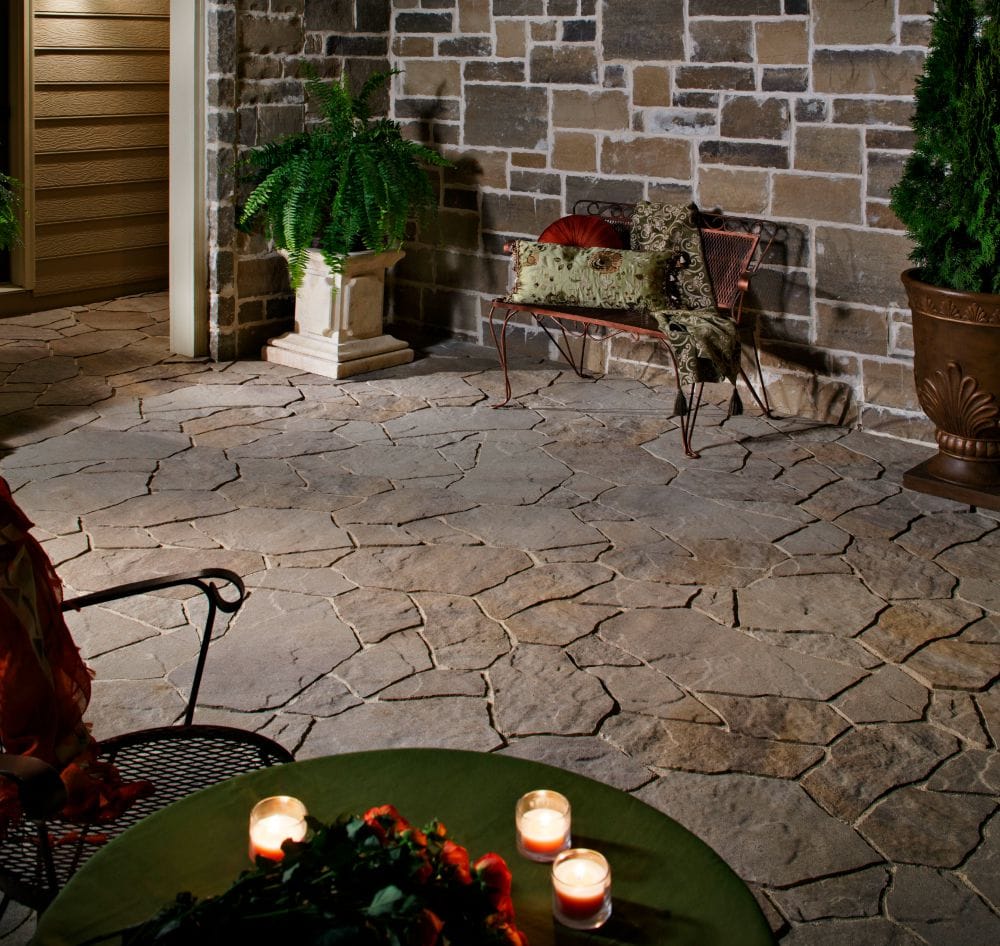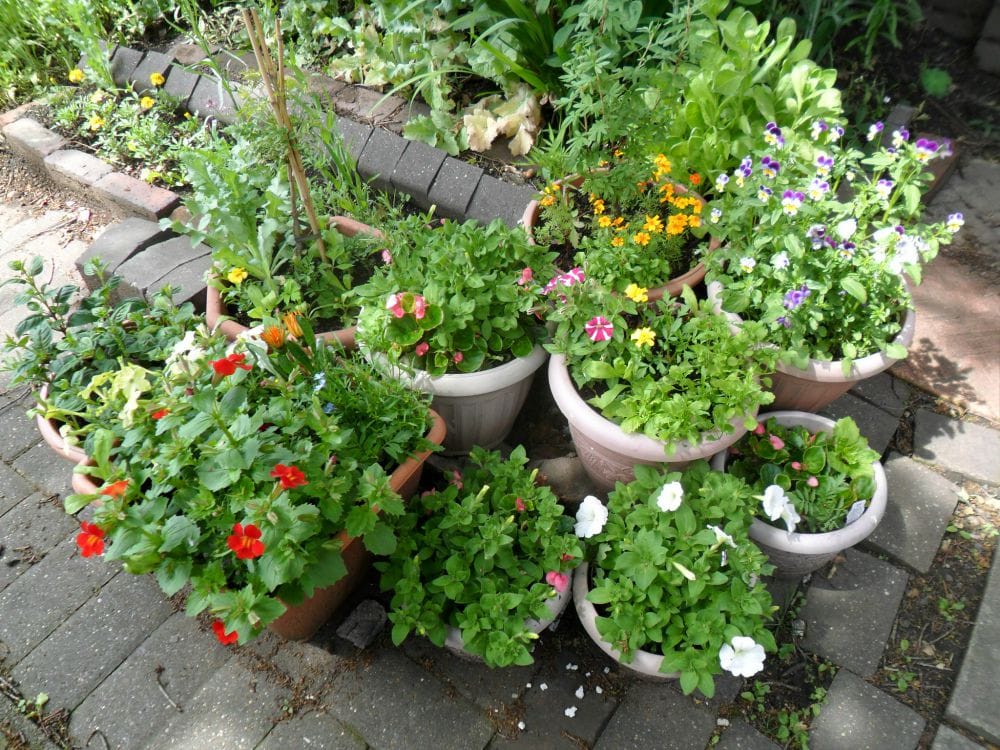How to Keep Container Plants From Drying Out

Summer in Southern California is challenging when it comes to container plants. Depending on the plant and type of pot used, many can require watering up to two times per day.
And, in today’s busy world, not many people have time for that. Plus, we’re more sensitive to wasting water because of the California drought.
But container plants are a fantastic way to add color to outdoor living spaces and paver patios as well as grow plants if your space is limited. Thank goodness there are a number of things you can do to to help your pots retain moisture.
11 Ways To Keep Potted Plants Hydrated
1. Add an Olla
Ollas are unglazed clay pots with a round base that can be buried underneath the soil with the bottleneck opening positioned above ground so that it can be refilled. It is actually one of the most ancient methods of irrigation known to man dating back over 4000 years.
Water seeps from the olla into the soil via a suction effect that occurs when the soil is dry. Roots tend to also grow around ollas and pull water from the pot when needed. You can purchase them in a variety of sizes and hide them fairly well in busy container plantings. Just be sure to cap the top of the olla with a rock or cork to prevent mosquitos from breeding and unnecessary evaporation.
2. Use Drip Irrigation
Run a drip line to your container pots to automate watering. If you have the luxury of renovating your outdoor living space, think about where your container plants will go and have a main line installed nearby or even right under your container plants. This makes it easily to conceal irrigation before your hardscape goes in.
3. Water in the Morning

Plant roots are more willing to absorb water in the morning after nightfall cools the environment around them. While this means that you could in theory water before bed time, it’s not advised because trapped moisture that can’t evaporate well at night and is more likely to cause mildew and other issues.
4. Create a Wick
Grab some yarn or other absorbent wicking string or rope. Fill a bucket with water and place it next to the container plant. Place one end of the wick all the way at the bottom of the bucket (so that it wicks up all of the water) and the other about 3″ deep in the soil of the container that needs watering. As the soil dries, the wick should provide water.
However, do test your set-up to make sure it works prior to placing it in full action. Some say cut-up old T-shirts work well for this instead of string, too.
5. Mulch the Top
Use rocks or bark as mulch on the top of your containers. This will help keep them from drying out as well as prevent weeds from forming that can steal moisture from your plants.
6. Choose Pots Wisely

Small pots need extra care because of their tendency to dry out faster. Larger pots need more soil which allows the pot to retain more moisture. In hot climates, glazed clay pots retain heat that transfers to the soil. Dark colored pots also retain more heat than light-colored ones. Heat accelerates moisture evaporation.
7. Water Deeply
Merely wetting the top layer of soil in a container pot is more wasteful than it is helpful. Not only does the top layer dry out quickly, but the roots which is where water is required are usually much deeper in the pot. Soak the entire pot each time you irrigate until water runs out the bottom (this actually doesn’t usually take much water in smaller pots). Make sure pots have drainage holes so excess water can escape in order to avoid a root rot problem.
8. Consider Plastic Pots
While they aren’t as aesthetically pleasing as terracotta or clay, plastic pots retain moisture better than the other two options. What many gardeners do is keep plants in the plastic nursery pots and slide them inside more attractive pots. Keep in mind that plants meant to grow much larger in side will be constrained using this method but seasonal flowers won’t mind.
9. Line Pots with Plastic Bags
And, speaking of plastic, some gardeners line attractive pots with plastic bags (be sure to puncture drainage holes) to prevent evaporation. This is done prior to the insertion of soil or plants, of course.
10. The Plastic Bottle Trick
A popular way to prolong the need to manually water plants is by repurposing a plastic bottle. There are a few things to know here, however. First, the soil in the container planting must be thoroughly wet prior to inserting the bottle, otherwise this set-up won’t work. It is recommended that puncture holes in the lid, screw it back on to the bottle and then up-end it into the container. This will help prevent dirt from entering the bottle and clogging it. Mesh can work, too.
11. Use Sponges
Place a household sponge at the bottom of a pot to help soak up water. This isn’t going to be very helpful for large containers but you might want to consider it for smaller plantings.
Dehydrated Container Help

If a container planting is so dry that the soil hardens, clumps and separates from the sides of the pot, break it up with a shovel. Otherwise, water will run off the hard surface and head straight to the bottom of the pot. If the container is small enough to be submerged in a bucket of room temperature water, do so until the soil is completely soaked… usually this is when bubbles stop forming in the water as any air gaps are filled with water. Then, life the pot and allow it to drain properly. If the plants are merely wilted (and not on their last leaves, literally), they should recover.
Beware of Water Crystals
Hydrogels or water retaining crystals are marketed as being able to retain water and release it over time so that container plants need less watering. Most of these crystals contain polyacrylamide and there is some debate as to whether or not it’s a carcinogen. A study by the University of California, Davis suggests that hydrogels do not decrease overall water needs of a plant so they are really only helpful to for delaying watering. They are not advised for edible gardens.
Your Turn…
How do you keep container plants from drying out?
Photo credits: Flickr/daryl_mitchell, Flickr/walkingthepeak